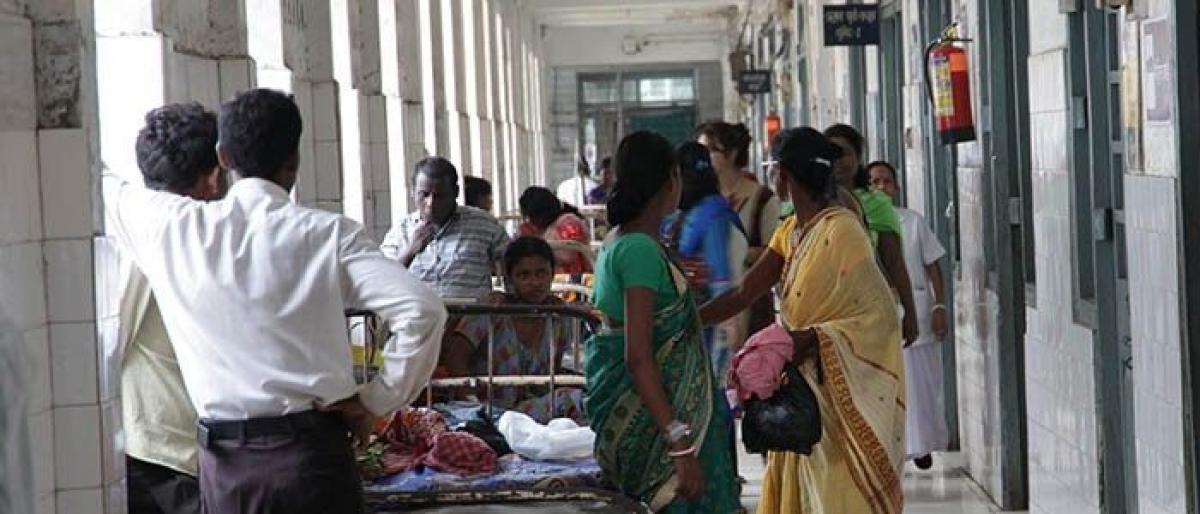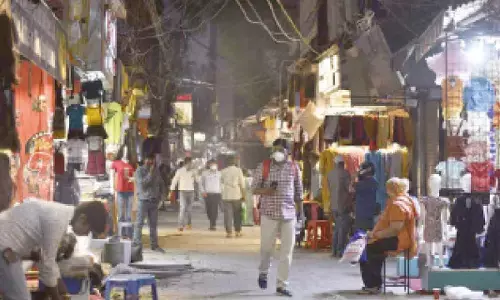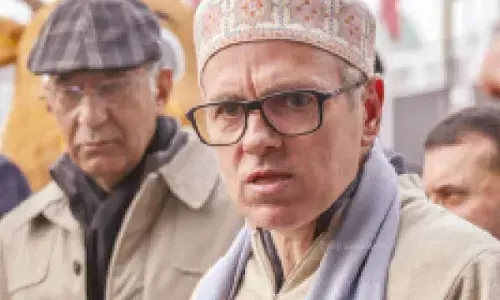Govt on track to meet healthcare spend goal

The Centre is on course to meet the 2025 target of spending 25 of Indias GDP on public health, reveals an IndiaSpend analysis of national data Considering Indias economic growth to be at a compound annual growth rate of 8 in real terms from 201516 to 202425, the countrys publichealth spending needs to rise 19 annually, on average, for the next six years, our analysis showed
The Centre is on course to meet the 2025 target of spending 2.5% of India’s GDP on public health, reveals an IndiaSpend analysis of national data. Considering India’s economic growth to be at a compound annual growth rate of 8% in real terms from 2015-16 to 2024-25, the country’s public-health spending needs to rise 19% annually, on average, for the next six years, our analysis showed.
Under the government of Prime Minister Narendra Modi, public-health spending by the union health ministry rose 9.4% in 2015-16, 16.5% in 2016-17 and 36.3% in 2017-18 in nominal terms.
If India were to have achieved the target in 2015-16, the Centre should have accounted for 42% of public-health expenditure – and the Centre should have spent thrice the amount it did while the states should have spent more than double the amount they did – according to our counterfactual analysis of national health spending data.
In 2017-18, the Centre accounted for 37% of India’s public health expenditure while the states bore the rest, according to data in the National Health Profile 2018, based on budget estimates for that year. This figure rose from 31% in 2015-16, the latest year for which actual expenditure data were available.
India did not meet its previous public-health spending goals. The National Health Policy, 2002, had set a target of 2% of GDP by 2010; the United Progressive Alliance government, in 2004, had set a goal to increase public health spending to 2-3% of GDP over a five-year period; and the Centre’s 12th five-year plan set the target at 1.87% of GDP by March 2017.
At 1.02% of its GDP in 2015 – a figure which remained almost unchanged in six years since 2009 –India’s public health expenditure is amongst the lowest in the world, lower than most low-income countries which as a group spend 1.4% of their GDP on health, IndiaSpend reported on June 21, 2018. This figure rose to 1.17% and 1.28% in the two following years, according to revised and budget estimates.
The equivalent proportion of GDP spent on health in the Maldives is 9.4%, in Sri Lanka 1.6%, in Bhutan 2.5% and in Thailand 2.9%.
The consequence of the inadequate public health spending is that India has become the sixth biggest private spender on health among low-middle income nations. Out-of-pocket health expenditure pushed 55 million Indians – more than the population of South Korea, Spain or Kenya – into poverty in 2011-12, as IndiaSpend reported on July 19, 2018. This underspending, as our analysis shows, is a legacy of the past.
We sent questionnaires seeking comment to the secretary, ministry of health and family welfare, and the office of the minister for health and family welfare on June 25, 2018. We will update the story if and when we receive a response.
With the Centre’s Ayushman Bharat programme – which aims to provide a Rs 5 lakh insurance cover to more than 100 million families, and improve primary healthcare – set to kick off in September 2018, it is important to establish how the 2025 target could be met.
The National Health Policy 2017 does not specify the strategy to increase health spending, saying only that “[g]eneral taxation will remain the predominant means for financing care.”
“The Government could consider imposing taxes on specific commodities- such as the taxes on tobacco, alcohol and foods having negative impact on health, taxes on extractive industries and pollution cess,” the policy said. “Funds available under Corporate Social Responsibility would also be leveraged for well-focused programmes aiming to address health goals.”
The analysis
To determine how the Centre and the states should share the responsibility of meeting the country’s current health spending goal, we analysed the actual GDP and expenditure data for 2015-16, and worked backwards to see what the spending should have been if the target was met that year.
In 2015-16, India’s GDP was Rs 137.6 lakh crore ($19.9 trillion). To have met the 2.5% target that year, India should have spent Rs 3.44 lakh crore ($50 billion) on health.
States are expected to spend more than 8% of their budgets on health, according to the National Health Policy 2017. Considering the lower limit of 8%, the states should have spent Rs 1.99 lakh crore. The remaining expenditure–Rs 1.44 lakh crore–should have been borne by the Centre.
The Centre’s health expenditure–including by the health ministry and other ministries–in 2015-16 was Rs 43,831 crore ($6.37 billion), less than a third of the required spending. States spent Rs 95,311 crore ($13.85 billion), less than half the required spending…
Only three states – Assam, Meghalaya and Mizoram – spent more than 6% of their budgets on public health in 2015-16, according to State Finances: A Study Of Budgets, published in May 2017 by the Reserve Bank of India, illustrating the size of the task ahead. For states such as Bihar, Haryana, and Madhya Pradesh, this would mean almost doubling the share of health expenditure in their budgets.
What the government said about raising funding: “[T]he problem is not a dearth of funds; there is no shortage of funds for health under Prime Minister Modi,” a top BJP leader was quoted as saying in The Hindu Business Line in January 2018. “The issue is whether the States have the capacity to absorb the funds.”
The utilisation of funds allocated for the National Health Mission (NHM) was “remarkably low” in 2015-16 and 2016-17, when “only about 55 per cent of the funds allocated to States were actually spent,” according to this May 2018 study by the National Institute of Public Finance and Policy.
“Keeping in view of the recommendations of 14th Finance Commission, with effect from Financial Year 2015-16, the Centre-State funding ratio has been increased from 75:25 to 60:40,” minister of state for health and family welfare Anupriya Patel told the Lok Sabha on February 9. 2018. “As per the MoU signed with the States under NHM, the States are directed to increase their State health budget by at least 10% each year.”
When asked for the plan to increase health spending, Patel said, on February 2, 2018, “The policy [National Health Policy 2017] envisages that the resource allocation to States will be linked with State development indicators, absorptive capacity and financial indicators”.
“The Central allocation of funds for health sector is based inter-alia on the availability of resources and competing claims on these resources,” Patel had told Lok Sabha in November 2016.
By:Rajeev Ahuja
(Courtesy: Indiaspend.com)



















